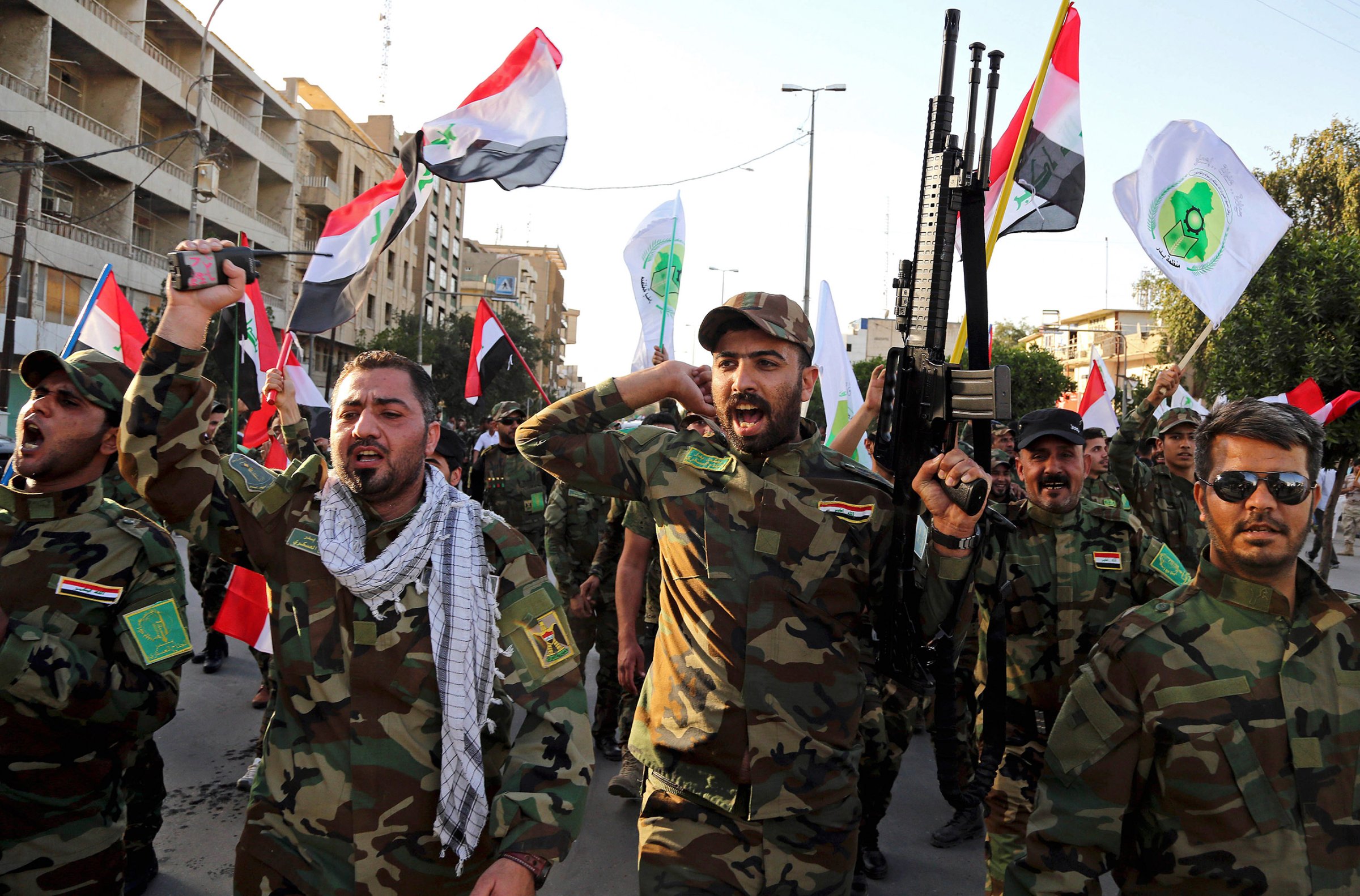
The kidnapping last week of three Americans in Baghdad underscores the central but volatile role of predominantly Shi‘ite, progovernment militias in the ongoing crisis in Iraq.
U.S. and Iraqi officials confirmed to Reuters on Tuesday that the three American contractors who disappeared are being held by a militia, so far unnamed. The incident is the latest illustration of how militias often allied with Iran remain an unpredictable element in Iraq’s shifting landscape of power, posing a dilemma both for the government in Baghdad and for the U.S.-led coalition battling ISIS.
In the power vacuum that followed the U.S. invasion of Iraq in 2003, a range of militia groups became a lethal feature, their abuses often overlooked by a U.S. military focused on battling Sunni insurgents. But when ISIS seized a huge chunk of the country and routed the Iraqi army in 2014, it was the Iran-backed Shi‘ite militias that led the charge against them, overshadowing Iraq’s security forces. After the fall of the city of Mosul that year, the militias expanded their local prestige by rushing to defend Baghdad and its environs from the advancing jihadists.
The armed groups — three of the largest of which are listed below — have a complex relationship with the Iraqi state. Prime Minister Haider al-Abadi declared the “popular mobilization forces,” an umbrella organization of armed groups, to be an official arm of the state in September in recognition of their role in the fight against ISIS.
But the militias remain a deeply controversial force; human-rights groups have documented brutal human-rights abuses, apparently motivated by sectarianism. After progovernment forces retook the majority Sunni city of Tikrit from ISIS, predominantly Shi‘ite militias destroyed hundreds of civilian homes and shops in the city and towns in March and April of 2015.
The militias also abducted more than 200 Sunni residents, according to a Human Rights Watch report, including 160 who were still unaccounted for when the rights watchdog released its report in September 2015.
So when Iraqi forces began the operation to retake the city of Ramadi from ISIS in December, al-Abadi’s government sidelined the militias — reportedly at the urging of U.S. officials concerned that those groups’ involvement could further inflame sectarian relations.
That may be the real reason behind the kidnappings, some analysts suggest: a retaliation for the governments’ decision to bar the militias from the Ramadi operation. “The militias are resentful of the success of the army in Ramadi which was achieved with the support of the U.S.-led coalition and without their involvement,” Baghdad-based analyst Hisham al-Hashemi told Reuters.
There are three primary militia organizations. It’s not yet known which, if any, are responsible for the kidnappings:
The Badr Organization
The oldest of the militias, this group’s history dates to the epic Iran-Iraq war of the 1980s, which killed hundreds of thousands on both sides. In that period, the group’s Hadi al-Amiri fought on the Iranian side and continued to fight the regime of Saddam Hussein in the years after the war. After the U.S. occupation in 2003, al-Amiri re-emerged as a force in Iraqi politics. He is openly pro-Iran, and is close with Qassem Suleimani, the commander of the elite Quds Force in Iran’s Islamic Revolutionary Guard Corps.
Today the group is reported to command 10,000 fighters and also enjoys tight relations with elements of the Iraqi state. Iraq’s Interior Ministry is currently headed by a member of the Badr Organization. As al-Amiri told Foreign Policy magazine in response to a question about the group’s Iranian support: “We don’t need weapons — we have weapons. We’re part of the Iraqi government now.”
Kataib Hezbollah
The U.S. State Department declared this secretive group a terrorist organization in 2009, blaming the group for attacks on U.S. forces. Its leader, known by the nom de guerre Abu Mahdi al-Mohandes, began working with the Iranian Revolutionary Guard Corps in Kuwait in the 1980s and later lived in exile in Iran. Returning to Iraq following the fall of Saddam Hussein, he was elected to parliament and today commands “tens of thousands” of new recruits in the fight against ISIS.
Asaib Ahl al-Haq
Created following the U.S. occupation of Iraq, Asaib Ahl al-Haq was formed as a result of a split in forces loyal to the influential Shi‘ite cleric Moktada al-Sadr. The group is also reported to receive support from Iran’s Quds Force.
In addition to fighting ISIS in Iraq, the group is also sending fighters to support the regime of President Bashar Assad in Syria. According to the U.S. military, the group’s leader, Sheik Qais al-Khazali, oversaw operations that included an attack that killed five U.S. soldiers in Karbala in 2007. Al-Khazali was captured by U.S. forces and released in 2010. Al-Khazali also reportedly organized the kidnapping of five British men in Iraq in 2007.
More Must-Reads From TIME
- The 100 Most Influential People of 2024
- The Revolution of Yulia Navalnaya
- 6 Compliments That Land Every Time
- What's the Deal With the Bitcoin Halving?
- If You're Dating Right Now , You're Brave: Column
- The AI That Could Heal a Divided Internet
- Fallout Is a Brilliant Model for the Future of Video Game Adaptations
- Want Weekly Recs on What to Watch, Read, and More? Sign Up for Worth Your Time
Contact us at letters@time.com